Wallacea Biodiversity Hotspot
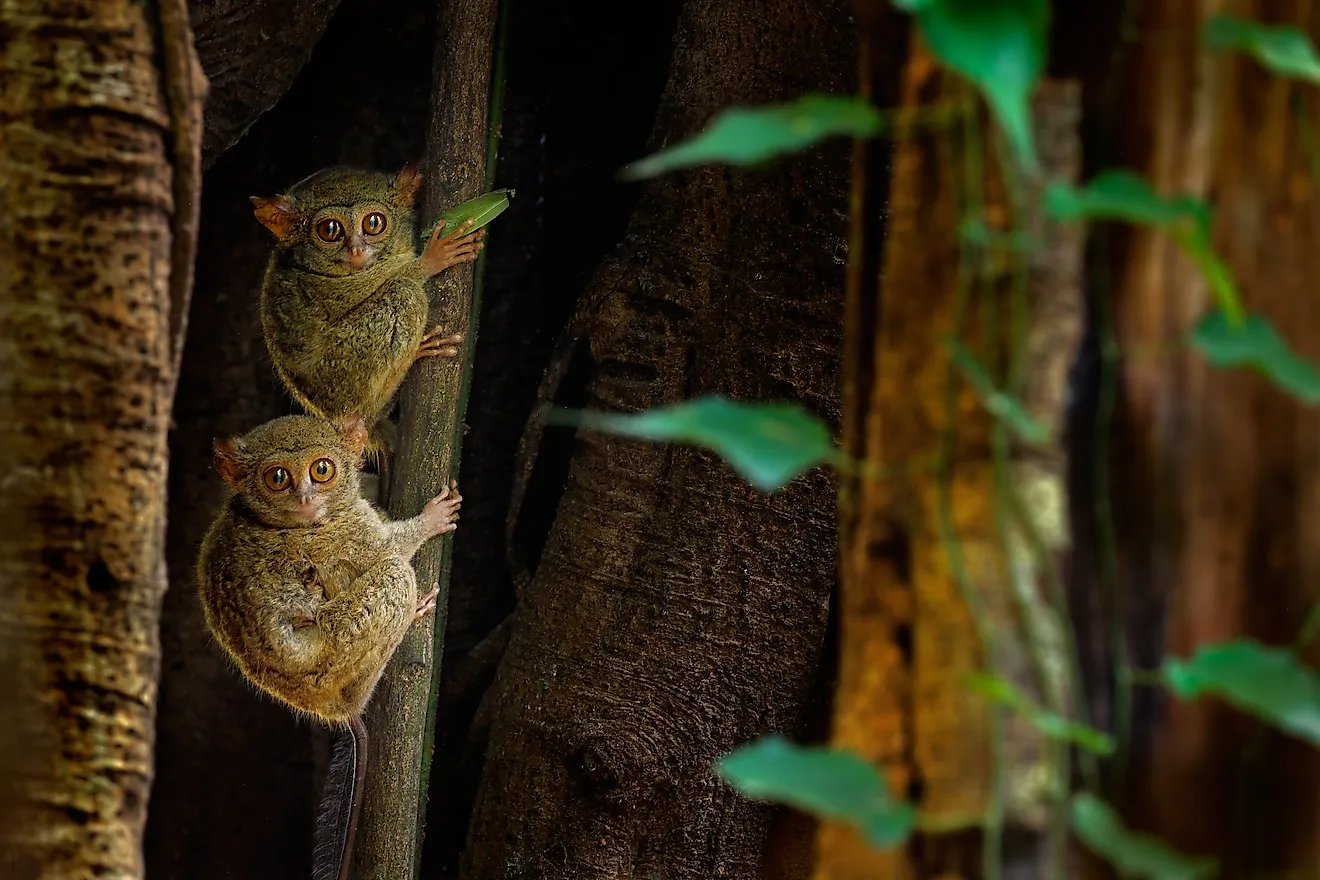
- Wallacea hotspot gets its claim to fame for being one of the most biologically diverse regions in the world.
- Due to historical isolation and speciation, much of the flora and the fauna are endemic in this hotspot.
- The exploitation of wildlife for food and medicine has led to a steady decline or local extinction of species in Wallacea.
The world can be divided many different ways, including dispersion of species, which is the distribution of organisms over time within certain areas of the Earth. A contributor to the study of dispersion, Alfred Russel Wallace, suggested that the line running specifically between Bali and Lumbok, Borneo and Celebes, and between the Philippines, Sangi and Talaud, separates the fauna on the both sides of that line.
It is believed that the main reason for the Wallacea’s high level of endemism is indebted to the formation of a speciation region (where new species are naturally bred) between the species on the two continents. Due to historical isolation and speciation, nearly 50% of the flora and the fauna found in Wallacea, are unique to this little part of the world.
Contents:
Location
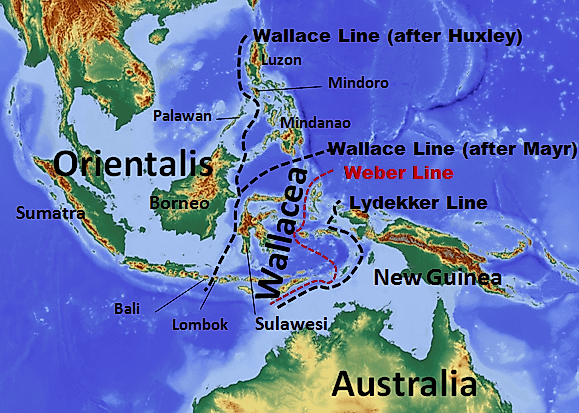
Wallacea is located between Asia and Australia, in a vertical stretch of islands that cover a total area of 347,000 sq. km. It is comprised of the following islands: Sulawesi, which is the largest island, Lombok, Sumbawa, Sumba, Timor, Halmahera, Buru, Seram, and other smaller islands. What makes this islands segment a biodiversity hotspot, is the high level of endemism, with roughly half of the specimen found exclusively here, and not even on the neighbouring continents. Furthermore, being densely covered by forested areas, contributes greatly to the large number of endemic species, that Indonesia in particular, is known for.
History
The Webber line clearly marks the separation of the fauna of the Wallacea. This separation is believed to have begun in the ice age, when the sea level allowed for migration of species between Asia and Australia. As the world’s second largest island, New Guinea, it also contributed the intermingling of species during this period, specifically with those species from Australia.
Fauna
Mammals
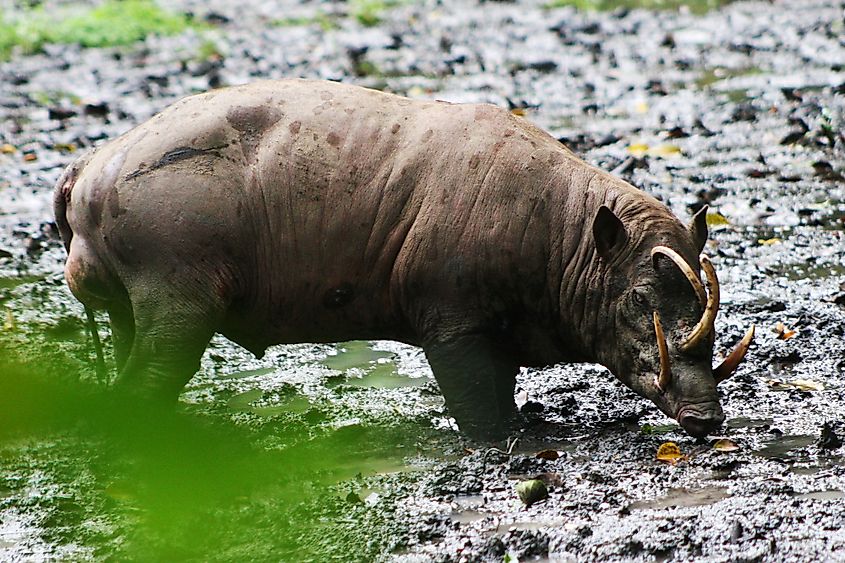
There are over 220 different mammals residing in the Wallacea, 125 of which are endemic. Without counting the 125 variations of native bat species, 88 percent of all mammals in the region are endemic, or found nowhere outside of the Wallace Line. Some of the endemic mammals include the unique-looking Anoa, also known as the Dwarf Buffalo, and the deer pig, or Baribusa (Babyrousa babyrussa). These are hairless, dirt-colored, slightly taller and more slender version of a pig or a wild boar. Male representatives of this specie boast substantial sharp husks extending upwards from their snouts.
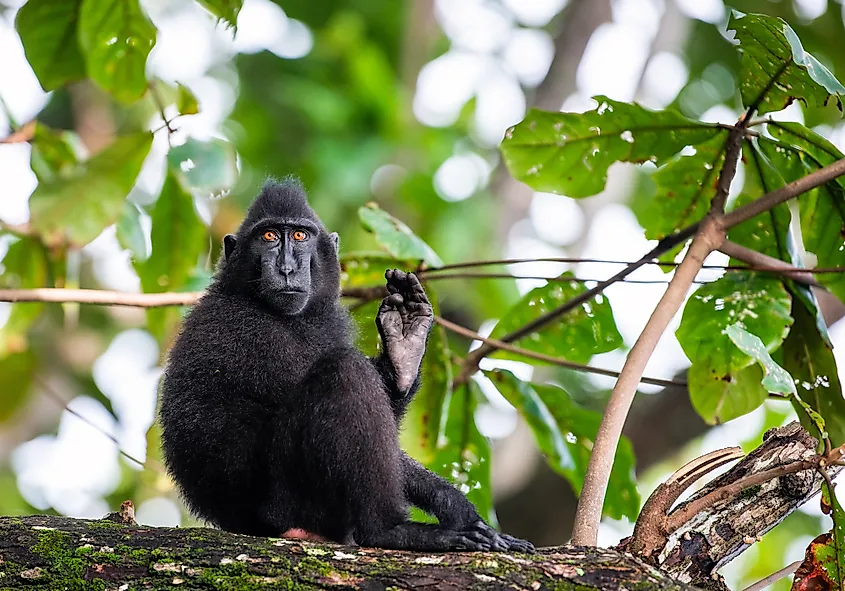
Sulawesi island also hosts seven species of endemic macaques, as well as five species of endemic tarsiers, or small monkeys with enormous eyes, often found hugging or clenching onto a tree branch with a seemingly petrified look in their enormous eyes. Their gaze is reminiscent of the fact that one-third of the endemic mammals in the Wallacea are at the threat of disappearing from the face of the Earth altogether.
Reptiles And Amphibians
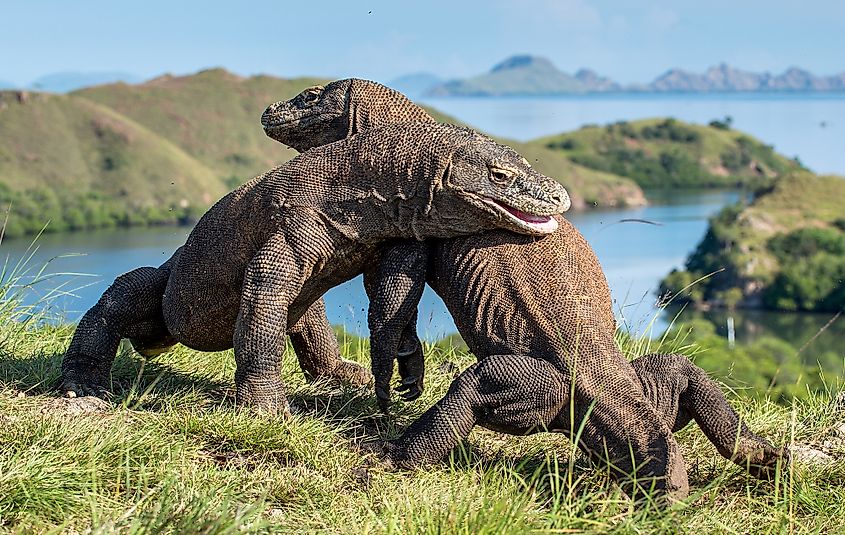
There are over 220 species of reptiles in the Wallacea, as well as 50 amphibian species. 100 endemic reptiles include the infamous Komodo dragon (Varanus komodoensis), the menacing-looking lizard, who is the largest representative of its family on Earth.
Over 60 percent of the amphibian species are exclusive to this region, including all of the frogs, such as the Sulawasi toad (Bufo celebensis), and the Oreophryne monticola, which is also endangered.
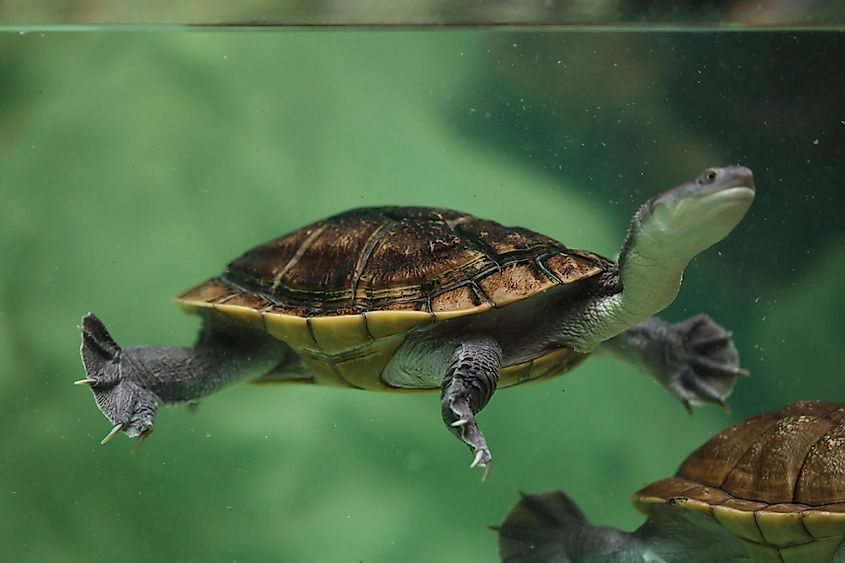
Perhaps one of the most endangered animals in the Wallacea, is the Critically Endangered Roti Island snake-necked turtle (Chelodina mccordi). They exist in only three populations spread over 70 sq. km on the small Roti island.
Invertebrates
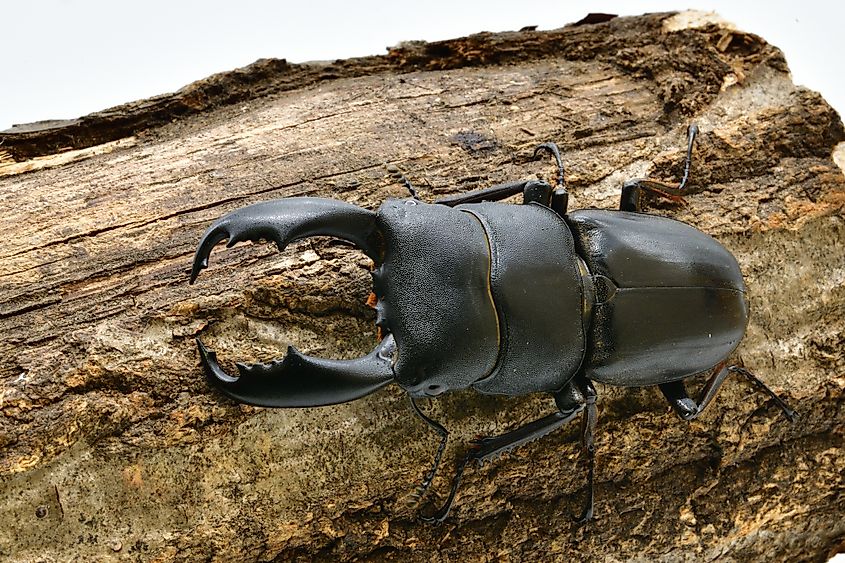
Naming, or even seeing all of the Wallacea’s insects, has proven to be an impossible challenge, due to their quantity, proportions, and movement. Therefore, most, but the hard-to-ignore enormous and beautiful bird-wing butterfly from the swallowtail butterfly family, are still unknown.
The larger, surface-dwelling tiger beetles have been easier to recognize, and out of the 109 recorded species, 79, are endemic.
Finally, the largest bee species on Earth, the Chalocodoma pluto, with females growing up to four centimeters long, can be encountered in the northern Moluccas of Indonesia.
Birds
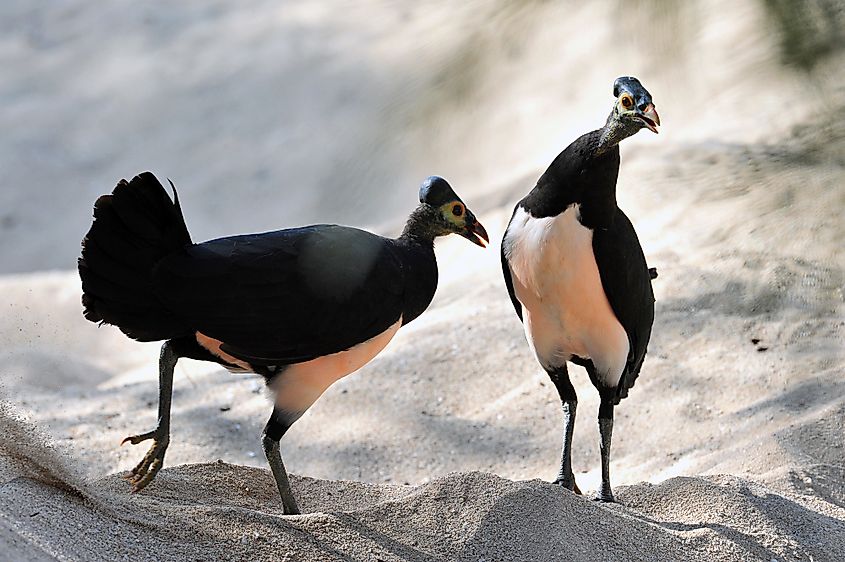
There are 650 different bird species that fly over the Wallacea on the regular basis, 40 percent of which are endemic to this region. 356 of these, including the 96 endemic kinds of birds, occupy the skies and build homes exclusively on the Sulawesi island.
Macrocephalon maleo, known as the Endangered maleo, bear a slight resemble to hens. These taller and more poised far-off cousins of poultry possess a dark coat with pink featherings around the chest and the belly area. Just like their shorter-necked and stubbier-legged chickens, they lay eggs in self-built mounds, out which hatchlings appear three months later, wearing a full coat of feathers.
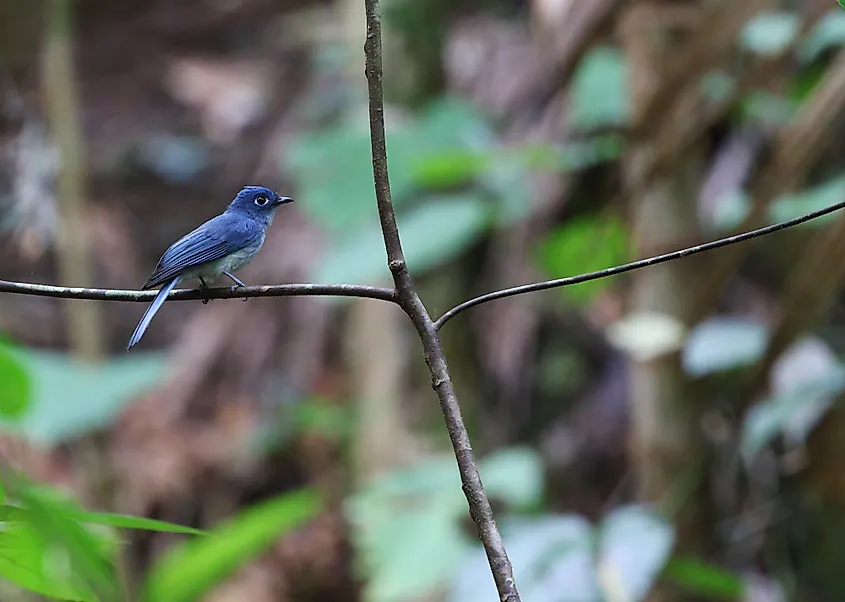
Another representative of the fifty endangered bird species of the hotspot, are the Critically Endangered caerulean paradise-flycatcher. Although considered extinct until their rediscovery in 1998, these small, azure-colored branch-hoppers can be found sitting innocently in a tree’s canopy, today.
Aquatic
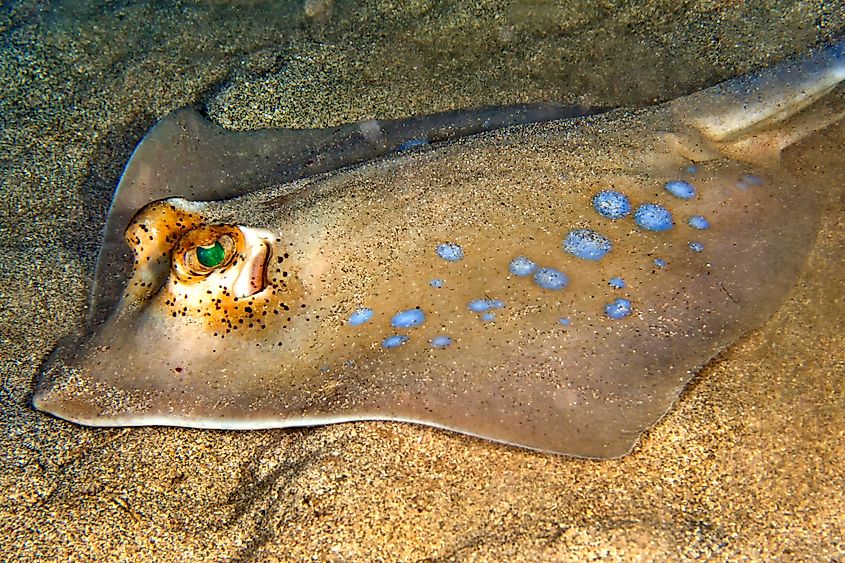
There are more than 300 species of fish living in the fresh-waters of the Wallacea, including 75 endemic species. Three quarters of the 70 different kinds of fish occupying the fresh-waters of the Sulawasi island, alone, are also endemic. Nearly all of the Wallacean fish are salt-water tolerant. This means that if they were to become endangered due to rising sea-levels or over-fishing, they could successfully be transported to a different environment for accelerated breeding.
Flora
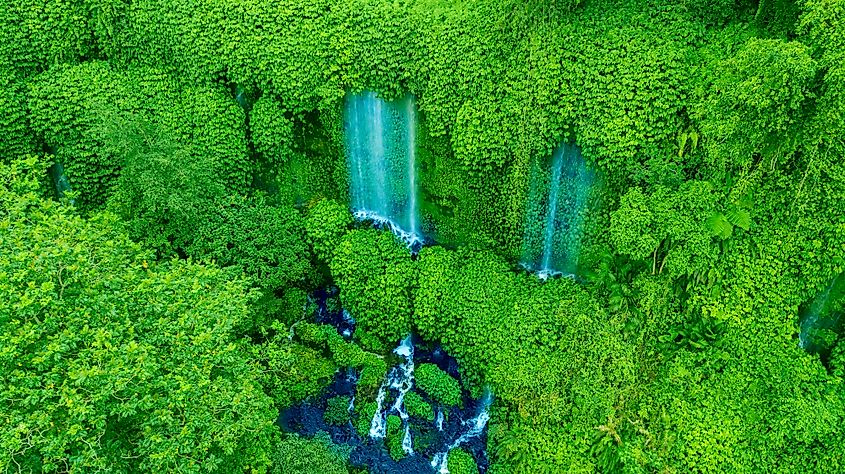
Being heavily covered by forests does not only provide a home to the many endemic animals of the Wallacea, but creates an environment of ten-fold the amount more species of plants, with 15% being endemic.
There are an estimated 10,000 different species of vascular plants, or plants that absorb carbon dioxide, transport water and nutrients through their systems, and produce oxygen. Although most of them are yet to be studied extensively, it is known that roughly 1,500 different species are endemic to the hotspot.
Known for their record number of rainy days in a year, the lowlands are rich in forests and boast the largest numbers of tree species. However, many of these trees are not suitable for resin and timber production.
Environmental Threats
Although the region is slowly urbanizing, with the Indonesian Wallacea’s population alone at 30 million, the continuous human dependence on agriculture stresses the areas rich, although quickly-waning, natural resources.
There are both natural and human threats that endanger the flora and the fauna of the region. This is especially precarious concerning the endemic species, causing their already isolated populations to decline. At the same time, very little is being done today to protect the continuous success of the endemic species. For example, out of the 1142 vertebrate species, 45 % of which are endemic, less than 6% are within protected areas.
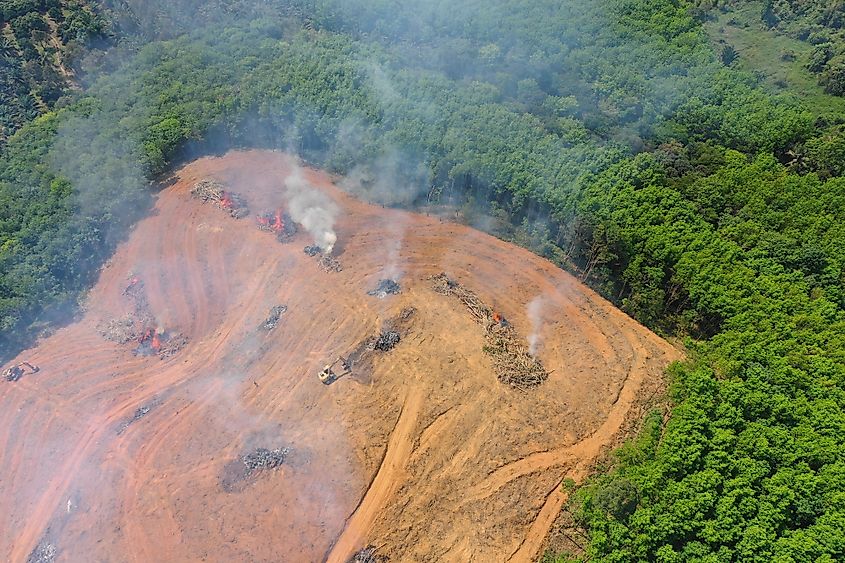
Some areas of the highly-endemic Indonesia are vulnerable to drastic climate changes. The increasing temperatures bring unexpected rains that can cause floods and raise the sea level, destroying habitats on land, flooding plants, and displacing aquatic life to their doom.
Another major threat to endemism is unsustainable and illegal logging in Indonesia, which causes forest degradation and disruption of the natural life by human presence. On the other hand, in the rural environment of Timor-Leste, wood is the primary resource for meeting human needs. It is used plentifully as a fuel for cooking, smoking fish for commercial purposes, and for heating households. Unfortunately, despite urbanization, the region has not moved towards the finer balance, where humans and the richness of the nature around them, can exist symbiotically, as of yet.
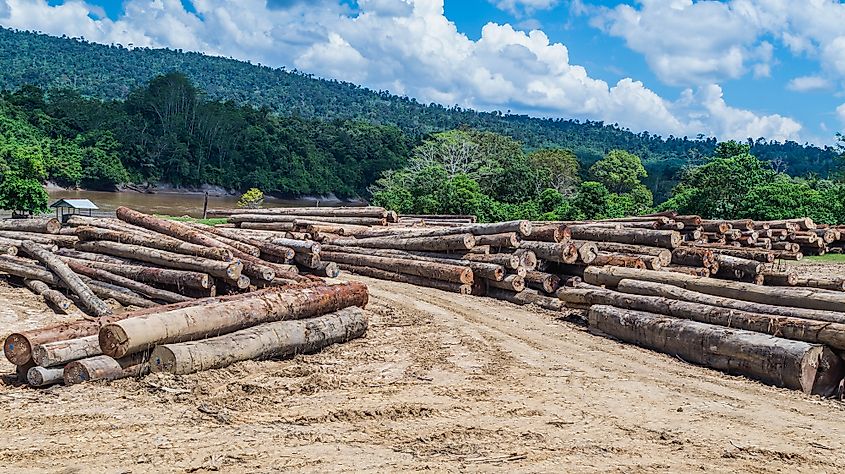
Poison and bombs to catch fish have been employed as a fishing method for years by the locals and in commerce. As the years go on, it only extends further into the ocean, damaging its greater depths. These practices destroy reefs and biota by bringing on stress and disease, which inhibit the life in the ocean from successfully multiplying.
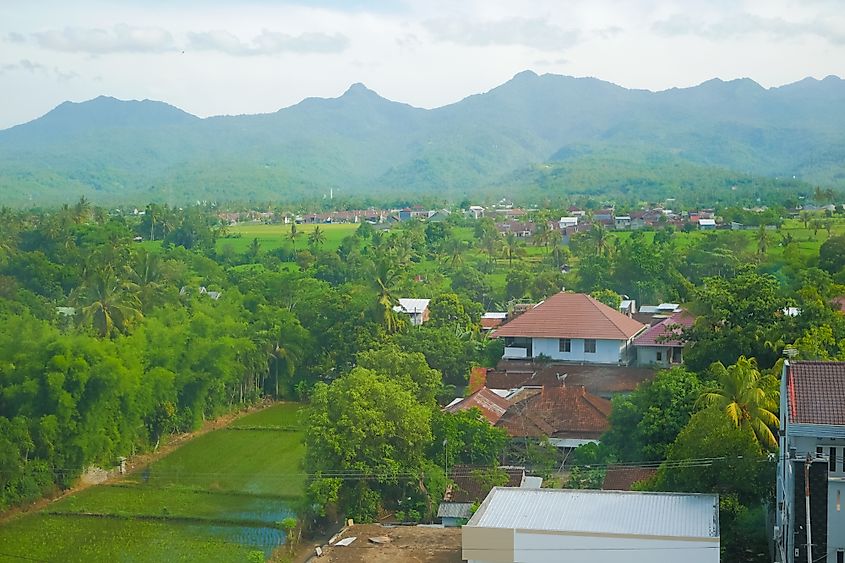
Sustaining the local families and for commercial purposes, such as the production of organics for the rest of the world, have led to exploitation of the plants and the animals for food and medicine. This has also led to a steady decline or local extinction of species, including the once-thriving Critically Endangered yellow-crested cockatoo (Cacatua sulphurea), of which there are only a handful left.
The extraction of palm oil and sugar cane which are used in an array of products world-wide are also exploited for commercial purposes.











